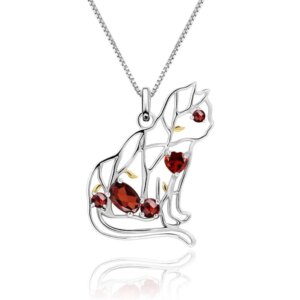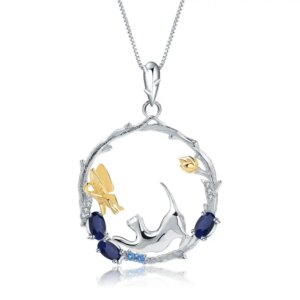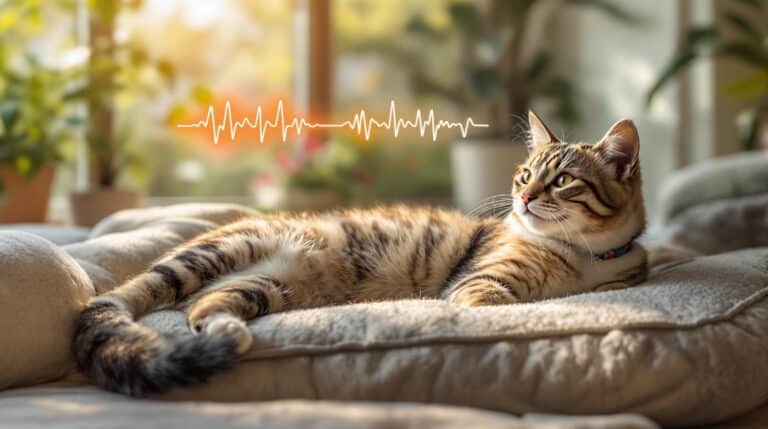We at Cat Karma Creations understand the importance of keeping your feline friends safe and healthy. This guide will help you identify and treat a cat stung by a bee, including common symptoms, step-by-step treatment methods, and preventive measures. Learn when to seek veterinary care and how to keep your feline friend safe from bee stings. This guide will help you ensure your cat’s well-being and provide the necessary care in case of a bee sting.
Common Symptoms of a Cat Stung by a Bee
Identifying a bee sting in your cat is crucial for prompt treatment. Here are the common symptoms to look out for:
Identifying the Sting Site
One of the first signs of a bee sting is the location of the sting. Common sites include the face, paws, ears, and nose. Carefully examine your cat for any unusual bumps or swelling. If you notice any of these symptoms, you can reach out to us at info@catkarmacreations.com for further advice.
Swelling and Redness
Swelling and redness are typical symptoms of a cat stung by a bee. The area around the sting will become inflamed and may appear red. This is the body’s natural response to the bee venom. If you need more information on how to handle this, feel free to visit our All Jewelry page for some calming and uplifting jewelry options.
Pain and Discomfort
Your cat may show signs of pain and discomfort, such as limping if the sting is on a paw, or rubbing their face if the sting is on the nose or ear. They may also vocalize more than usual or become more restless. For additional support, you can contact us at (800) 343-1604.
Behavioral Changes
Behavioral changes can also indicate a bee sting. Your cat may become more irritable, less active, or show a decreased appetite. Pay attention to any unusual behavior that could be a sign of discomfort. If you need more tips on how to soothe your cat, check out our Cat Themed Jewelry for some calming and beautiful pieces.
Step-by-Step Treatment for a Cat Stung by a Bee
Once you’ve identified that your cat has been stung by a bee, follow these steps to provide immediate relief:
Removing the Stinger
It’s important to remove the stinger as soon as possible to prevent further venom from entering your cat’s system. Use a flat, rigid object like a credit card to scrape the stinger out. Avoid using tweezers, as they can squeeze the venom sac and release more venom. If you need more detailed instructions, feel free to reach out to us at sales@catkarmacreations.com.
Applying a Cold Compress
Apply a cold compress to the affected area to reduce swelling and pain. You can use a damp, cold cloth or a bag of frozen vegetables wrapped in a towel. Hold the compress on the sting site for about 10-15 minutes. For more tips on soothing your cat, visit our Nature Inspired collection for some calming and beautiful pieces.
Administering Antihistamines
Antihistamines can help reduce inflammation and allergic reactions. Consult your veterinarian for the appropriate dosage and type of antihistamine to use. Follow their instructions carefully to avoid any adverse effects. If you need more information on safe and natural remedies, check out our Sterling Silver collection for some uplifting and calming jewelry.
Monitoring for Allergic Reactions
Keep a close eye on your cat for any signs of an allergic reaction, such as difficulty breathing, excessive swelling, or hives. If you notice any of these symptoms, seek immediate veterinary care. Allergic reactions can be life-threatening and require prompt attention. For more information on how to handle allergic reactions, feel free to contact us at admin@catkarmacreations.com.
Preventing Bee Stings in Cats
Taking preventive measures can significantly reduce the risk of your cat being stung by a bee. Here are some tips to keep your feline friend safe:
Avoiding Bee-Prone Areas
Bees are often found near flowers, gardens, and open water sources. Keep your cat away from these areas, especially during peak bee activity times, which are typically in the late morning and early afternoon. For more tips on keeping your cat safe, visit our Cat Themed Jewelry page for some beautiful and calming pieces.
Using Natural Repellents
There are several natural remedies that can help repel bees. Planting herbs like mint, basil, and lavender around your home can deter bees. You can also use essential oils like peppermint or eucalyptus, but make sure they are safe for cats and used in moderation. For more natural remedies, check out our Nature Inspired collection for some calming and beautiful pieces.
Keeping Cats Indoors During Peak Bee Activity
During the summer months, it’s a good idea to keep your cat indoors during the times when bees are most active. This will reduce the likelihood of your cat encountering a bee and getting stung. For more tips on keeping your cat safe, visit our All Jewelry page for some calming and uplifting jewelry options.
Regularly Inspecting Your Home for Bee Nests
Regularly check your home and yard for bee nests. If you find a nest, contact a professional bee removal service to safely remove it. Do not attempt to remove the nest yourself, as this can be dangerous for both you and your cat. For more information on keeping your home safe, feel free to reach out to us at (800) 343-1604.
When to Seek Veterinary Care
In some cases, a bee sting can be more serious and require veterinary attention. Here are the signs to watch for:
Severe Allergic Reactions
A severe allergic reaction, also known as anaphylaxis, can be life-threatening. Symptoms include difficulty breathing, swelling of the face and throat, and hives. If you notice any of these symptoms, seek immediate veterinary care. For more information on handling severe allergic reactions, visit our Sterling Silver collection for some calming and uplifting jewelry.
Difficulty Breathing
If your cat is having difficulty breathing after being stung, this is a serious sign that requires immediate attention. Swelling in the throat can obstruct the airway, making it difficult for your cat to breathe. For more information on handling breathing difficulties, feel free to contact us at info@catkarmacreations.com.
Multiple Stings
If your cat has been stung multiple times, this can lead to a higher dose of venom and more severe symptoms. Multiple stings can cause systemic reactions and require veterinary intervention. For more information on handling multiple stings, visit our Cat Themed Jewelry page for some beautiful and calming pieces.
Persistent Symptoms
If the symptoms of a bee sting persist or worsen over time, it’s important to have your cat evaluated by a veterinarian. Persistent swelling, pain, and discomfort can indicate a more serious issue that needs to be addressed. For more information on persistent symptoms, feel free to reach out to us at (800) 343-1604.
Comparison of Bee, Wasp, Hornet, Yellow Jacket, and Bumblebee Stings in Cats
Understanding the differences between various types of stings can help you provide the best care for your cat. Here’s a comparison of bee, wasp, hornet, yellow jacket, and bumblebee stings:
| Feature | Bee Sting | Wasp Sting | Hornet Sting | Yellow Jacket Sting | Bumblebee Sting |
|---|---|---|---|---|---|
| Pain Level | Moderate | High | Very High | High | Moderate |
| Swelling | Localized | Localized | Extensive | Localized | Localized |
| Allergic Reaction | Possible | Possible | High Risk | Possible | Possible |
| Treatment | Remove stinger, cold compress, antihistamines | Cold compress, antihistamines | Immediate veterinary care, cold compress | Cold compress, antihistamines | Cold compress, antihistamines |
| Prevention | Avoid areas with bees | Avoid areas with wasps | Avoid areas with hornets | Avoid areas with yellow jackets | Avoid areas with bumblebees |
Tips for Handling Bee Stings in Cats
Here are some additional tips to help you handle a bee sting in your cat:
- Identify the signs of a bee sting in your cat, such as swelling, redness, and pain.
- Learn how to safely remove a bee stinger from your cat’s skin to prevent further irritation.
- Understand the importance of monitoring your cat for allergic reactions, especially if they have been stung before.
- Explore natural remedies and over-the-counter treatments to alleviate your cat’s discomfort.
- Discover preventive measures to reduce the risk of your cat being stung by bees, such as keeping them indoors during peak bee activity.
- Know when to seek immediate veterinary care, especially if your cat shows signs of severe allergic reactions or difficulty breathing.
Popular Quote
“The greatest glory in living lies not in never falling, but in rising every time we fall.” – Nelson Mandela
This quote reminds us that even in difficult situations, such as dealing with a bee sting, it’s important to stay resilient and take the necessary steps to ensure your cat’s well-being.
Statistical Fact
According to the American Veterinary Medical Association (AVMA), approximately 5% of cats experience severe allergic reactions to insect stings. While this statistic is from a reliable source, it’s important to note that the actual percentage may vary. Always consult with a veterinarian if you suspect your cat is having an allergic reaction.
Three Tips for Handling Bee Stings in Cats
1. Stay Calm: Keeping a calm demeanor can help soothe your cat and make the treatment process smoother. Cats can sense stress and may become more agitated if you are anxious.
2. Use Natural Remedies: In addition to conventional treatments, consider using natural remedies like aloe vera or chamomile tea to help reduce swelling and soothe the sting site. Ensure these remedies are safe for cats before use.
3. Prevent Future Stings: Take preventive measures to reduce the risk of future stings. Keep your cat indoors during peak bee activity times and use natural repellents to deter bees from your home and yard.
Popular Questions
Q1: Can a cat die from a bee sting?
A: While it is rare, a cat can die from a bee sting if they experience a severe allergic reaction (anaphylaxis) or if they are stung multiple times. Immediate veterinary care is crucial in such cases.
Q2: How long does it take for a cat to recover from a bee sting?
A: Most cats recover from a bee sting within a few hours to a day. However, if your cat shows persistent symptoms or signs of an allergic reaction, seek veterinary care immediately.
Q3: Can I use human antihistamines for my cat?
A: It is generally safe to use human antihistamines for cats, but it’s important to consult your veterinarian for the appropriate dosage and type. Overdosing can be harmful, so always follow professional advice.
Q4: How can I prevent my cat from being stung by bees?
A: Keep your cat indoors during peak bee activity times, use natural repellents, and regularly inspect your home and yard for bee nests. These measures can significantly reduce the risk of your cat being stung.
Q5: What should I do if my cat is stung by a wasp or hornet?
A: The treatment for a wasp or hornet sting is similar to that of a bee sting. Remove the stinger if present, apply a cold compress, and monitor for allergic reactions. Seek immediate veterinary care if your cat shows signs of severe distress.
Final Thoughts About Cats Stung by Bees
In summary, being aware of the symptoms and knowing how to treat a cat stung by a bee can significantly improve your pet’s comfort and well-being. By taking preventive measures and seeking veterinary care when necessary, you can ensure your cat remains safe and healthy. Visit our website to find excellent gifts for cat lovers and follow us on social media for more tips and updates. For more information, visit us at Cat Karma Creations or follow us on Facebook and Instagram.
Don’t hesitate to reach out to us at info@catkarmacreations.com or call us at (800) 343-1604 if you have any questions or need further assistance. We’re here to help you and your feline friend stay safe and happy.

















